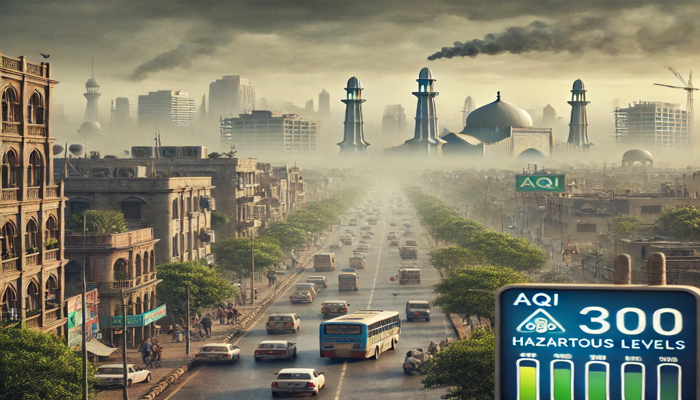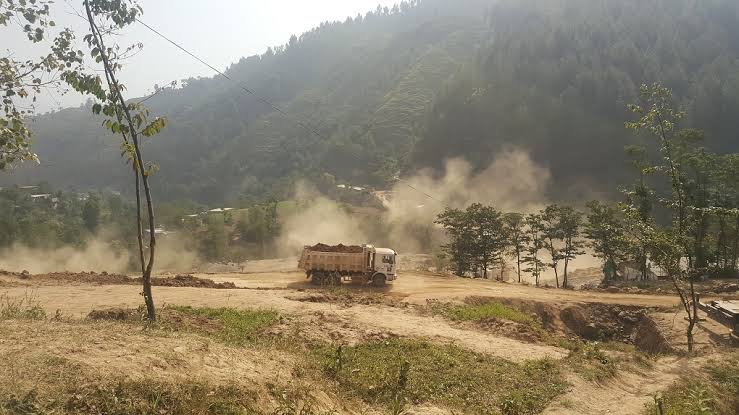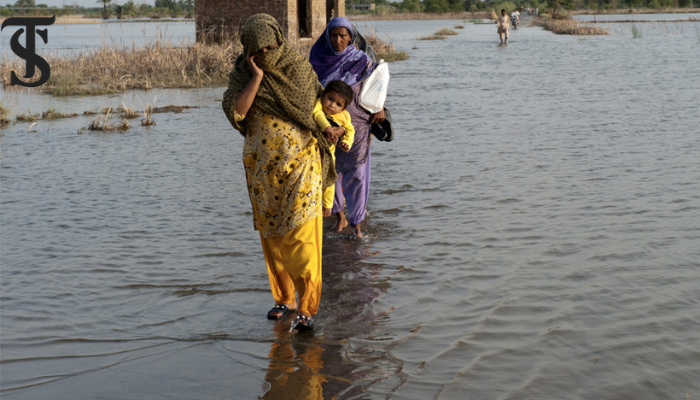Lahore’s Smog Crisis: Climate Diplomacy, and Green Lockdown

Lahore Ranked Among Most Polluted Cities Globally
In recent days, Lahore has been consistently ranked as one of the most polluted cities in the world. The city’s Air Quality Index (AQI) levels have soared to hazardous levels, surpassing a staggering 700 AQI earlier this week. Local authorities report that the current pollution levels are unprecedented for the city, marking one of the most severe smog crises in its history.
By Wednesday, the AQI index dipped to around 200, but officials warn that it could rise again as pollution-inducing factors persist in the atmosphere. Authorities have attributed a significant portion of Lahore’s smog to external factors, especially the air pollution drifting from India’s Punjab region.
Green Lockdown Initiative to Combat Air Pollution
In response to the crisis, the Punjab provincial government has announced a “Green Lockdown” in at least ten of Lahore’s most affected areas. According to an official notification, this lockdown will prohibit the entry of “chingchi” rickshaws and heavy traffic, limit parking of large motorcycles and vehicles, and encourage hybrid work models in both public and private offices. The Green Lockdown initiative aims to lower AQI levels and protect residents from harmful effects.
Officials estimate that nearly 30% of the smog affecting Lahore and other cities in Punjab originates from cross-border winds blowing from India’s Punjab. This phenomenon, known to occur annually, amplifies local air quality issues, putting the public’s health at significant risk.
Chief Minister Proposes Climate Diplomacy with India
Chief Minister of Punjab, Maryam Nawaz, has expressed interest in pursuing “climate diplomacy” with India to tackle this shared environmental threat. She is reportedly considering writing a letter to her Indian counterpart in Punjab, aiming to foster a cooperative approach toward combating regional air pollution.
Punjab’s Environmental Secretary, Raja Jahangir Anwar, explained that the smog problem on both sides of the border is exacerbated by similar agricultural practices, such as crop stubble burning, and comparable traffic congestion issues. Anwar stated that these shared factors often result in Lahore and New Delhi intermittently ranking as the world’s most polluted cities. Engaging in climate diplomacy could potentially yield solutions to mitigate this shared issue.
Smog Hotspots and Green Ring Plan
Punjab’s Environment Ministry has pinpointed Lahore’s key smog “hotspots” and plans to initiate the Green Lockdown in Shimla Pahari and its one-kilometer radius. Construction activities, entry of chingchi rickshaws, use of commercial generators, and outdoor cooking will be restricted in these areas. Wedding halls will close by 10 PM, and hotels will be barred from cooking with coal, wood, or charcoal.
Additionally, the government has introduced the “Green Ring” initiative, identifying the most polluted areas to enforce stricter measures, including planting trees and Miyawaki forests. Over time, these measures will be expanded to other areas of Lahore.
A Lasting Solution Requires Legislation and Community Support
Social media users and activists have voiced concerns over the recurring smog crisis, calling for lasting and sustainable solutions. Some advocate for legislative action and community involvement, noting that imposing a ban on chingchi rickshaws, which are affordable transportation for many, is not a complete solution.
As Lahore struggles to reduce pollution levels, local experts emphasize that a collaborative approach between governments and communities is essential. Raising public awareness and enacting effective policies can help mitigate the health hazards posed by smog, while climate diplomacy with neighboring regions could provide a sustainable way forward.






One Comment